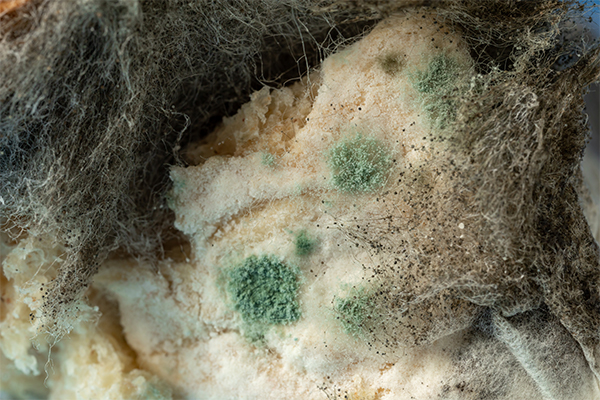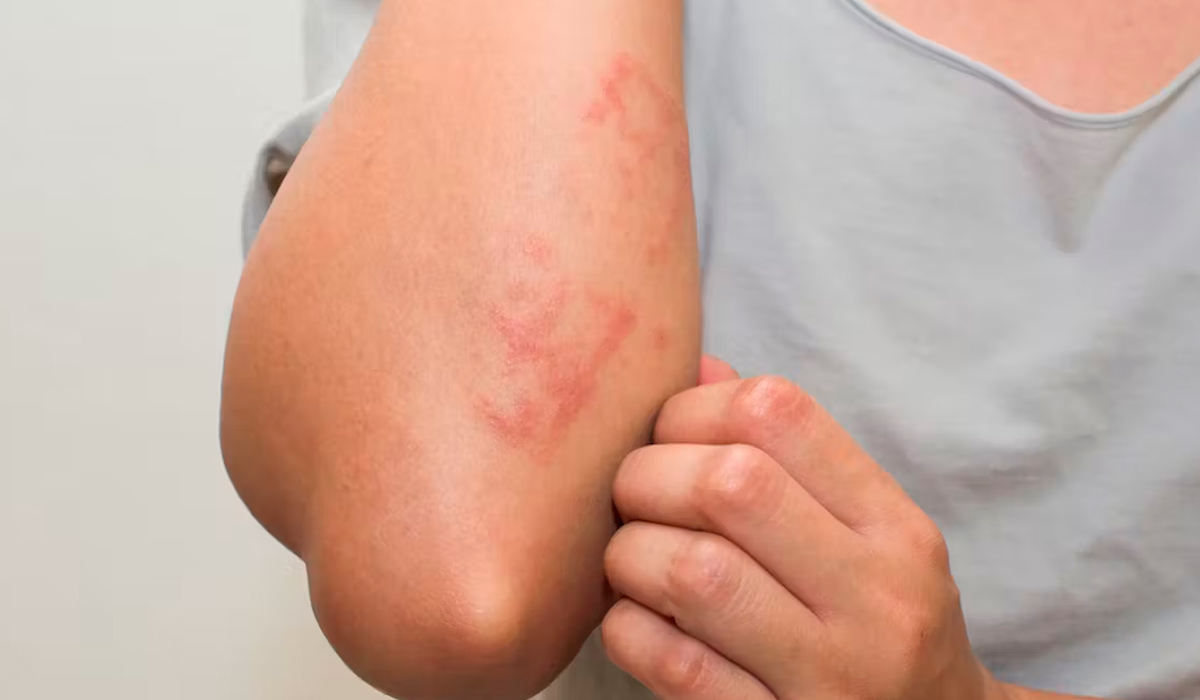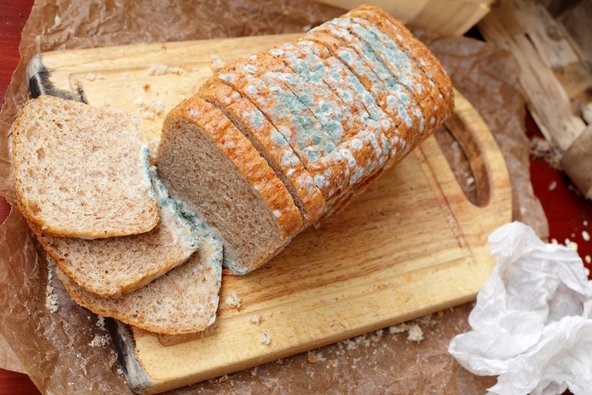
Toxic Mold: Impact on Pregnant Women & Pets
I. Introduction
Mold, including Toxic Mold, is a type of fungus that thrives in damp and humid environments. While it may be harmless to most people, exposure to toxic mold can pose a significant risk to the health of pregnant women and their pets. Therefore, it’s crucial to be aware of the dangers of toxic mold and take steps to prevent their growth in your home or workplace.
In this article, we will explore the risks associated with exposure to toxic mold during pregnancy and its effects on both pregnant women and their pets. Our goal is to provide essential information on the potential hazards of toxic mold, and offer practical guidelines for prevention and treatment.
By understanding the risks of toxic mold and following our prevention and treatment guidelines, pregnant women and pet owners can minimize the potential health risks and ensure a safe and healthy environment for themselves and their loved ones.
II. Health risks of toxic mold exposure on pregnant women
A. Respiratory issues
Mold spores can trigger respiratory issues in pregnant women, such as coughing, wheezing, and shortness of breath. These symptoms can be especially severe for women with asthma or other pre-existing respiratory conditions.
B. Allergic reactions
Exposure to toxic mold can also cause allergic reactions in pregnant women, such as itching, redness, and watery eyes. Allergies can cause discomfort and potentially lead to complications during pregnancy.
C. Toxicity
In rare cases, exposure to toxic mold can cause toxicity in pregnant women. This can result in symptoms such as dizziness, nausea, and headaches. Toxic mold exposure can be dangerous for both the mother and the developing fetus.
D. Complications during pregnancy
Mold exposure during pregnancy can increase the risk of complications, such as preterm birth, low birth weight, and pregnancy loss. Pregnant women should take extra precautions to avoid mold exposure.
E. Health guidelines for pregnant women
Pregnant women should avoid exposure to mold by staying away from areas with visible mold growth, keeping their homes clean and dry, and wearing protective gear when cleaning or working in areas with potential mold exposure.
III. Health risks of toxic mold exposure on pets
A. Respiratory problems
Pets can also be affected by mold exposure, experiencing respiratory problems such as coughing, sneezing, and wheezing.
B. Skin allergies
Mold exposure can cause skin allergies in pets, leading to itching, redness, and inflammation. This can cause discomfort and lead to more severe skin conditions.
C. Digestive problems
Mold exposure can also cause digestive problems in pets, such as vomiting, diarrhea, and loss of appetite.
D. Infections
Mold exposure can increase the risk of infections in pets, such as fungal infections of the skin and respiratory tract.
E. Hazards to pet health
Long-term exposure to mold can lead to serious health hazards in pets, such as respiratory and neurological damage. Pets should be kept away from areas with visible mold growth and provided with clean and dry living conditions.
IV. Symptoms of toxic mold exposure in pregnant women and pets
A. Symptoms in pregnant women:
When pregnant women are exposed to mold, they may experience various symptoms such as nasal congestion, coughing, wheezing, and shortness of breath. They may also experience skin irritation, eye irritation, and throat irritation. In addition, mold exposure during pregnancy can cause fatigue, headaches, and dizziness. These symptoms may be mild or severe, depending on the level of mold exposure.
B. Symptoms in pets:
Pets can also experience symptoms of mold exposure, such as sneezing, coughing, wheezing, and difficulty breathing. They may also develop skin rashes, eye irritation, and gastrointestinal problems such as vomiting and diarrhea. If your pet is exhibiting any of these symptoms, it is important to take them to the vet as soon as possible to determine the cause of their illness.
It is important to note that the symptoms of mold exposure in both pregnant women and pets can be similar to symptoms of other illnesses. Therefore, it is important to seek medical attention if you or your pet experience any of these symptoms.
V. Mycotoxins and their effect on pregnancy and pet health
Mycotoxins are toxic substances produced by certain types of mold. They can be present in the air or on surfaces and can be harmful to both pregnant women and pets.
Mycotoxins can affect pregnant women and pets in several ways. They can cause respiratory issues, skin irritation, digestive problems, and other health issues. Exposure to mycotoxins during pregnancy can also lead to complications such as miscarriage, stillbirth, and preterm birth.
It’s important to note that not all mold produce mycotoxins, and not all mycotoxin-producing mold are harmful. However, it’s difficult to determine the presence of mycotoxins without professional testing.
Symptoms of mycotoxin exposure can include headaches, fatigue, dizziness, and respiratory issues. If you suspect that you or your pet has been exposed to mycotoxins, it’s important to seek medical attention immediately.
Prevention is the best way to avoid mycotoxin exposure. This includes controlling moisture and humidity levels, maintaining household cleanliness, and promptly addressing water damage or leaks. Environmental testing can also be helpful in identifying potential mycotoxin exposure.
VI. Prevention of toxic mold exposure during pregnancy and for pets
Mold growth can be prevented by controlling the moisture level in the home. Pregnant women and pets can benefit from a few simple steps that can significantly reduce the chances of mold exposure.
A. Environmental testing
Environmental testing is the first step to determine if mold growth is present in the home. Professional environmental testing can identify the type of mold present and the level of mold spores in the air. This information can help guide the appropriate course of action.
B. Humidity control and moisture prevention
Humidity control is essential in preventing mold growth. Pregnant women and pet owners can use dehumidifiers to keep the humidity level in the home below 50%. It is also important to fix any water leaks or plumbing issues as soon as possible to prevent moisture buildup.
C. Household cleanliness and home maintenance
Keeping the home clean and well-maintained is also crucial in preventing mold growth. Regular cleaning and disinfecting of surfaces can help prevent mold from growing. Regularly cleaning carpets, bedding, and upholstered furniture can also help.
D. Prevention methods for pets
Pet owners can also take steps to prevent mold growth in their pets’ living areas. Regular cleaning of pet bedding, toys, and food bowls can help. Additionally, ensuring that pets have adequate ventilation and dry bedding can reduce the risk of mold growth in their living spaces.
By following these simple prevention methods, pregnant women and pet owners can significantly reduce their risk of mold exposure.
VII. Treatment options for toxic mold exposure during pregnancy and for pets
Dealing with mold exposure can be challenging, especially if you’re pregnant or have pets. However, there are several treatment options available that can help alleviate the symptoms and prevent further exposure.
A. Home Remedies
If you’re dealing with a mild case of mold exposure, there are several home remedies that you can try to alleviate the symptoms. These include using vinegar or hydrogen peroxide to clean the affected areas, using air purifiers, and using natural remedies like tea tree oil or grapefruit seed extract.
B. Professional Cleaning
If the mold exposure is severe, it’s recommended to seek professional help. Professional mold remediators have the expertise and tools to effectively remove mold and prevent it from spreading. They will also be able to identify the source of the problem and provide recommendations for preventing future mold growth.
C. Water Damage Restoration
If the mold exposure is due to water damage, it’s crucial to address the underlying issue first. Water damage restoration professionals can repair the damage and ensure that the affected areas are properly dried and ventilated to prevent mold growth.
D. Protective Gear
If you must clean up mold yourself, it’s important to wear protective gear, such as gloves, goggles, and a mask. This will help prevent you from inhaling the mold spores or getting them on your skin.
It’s crucial to address mold exposure as soon as possible to prevent further health complications. Seeking professional help is always recommended, especially for pregnant women and pets.
VIII. Conclusion
In conclusion, mold exposure can have harmful effects on pregnant women and pets. It’s essential to be aware of the health risks associated with mold exposure during pregnancy and for pets. This article has outlined the various health risks associated with mold exposure, including respiratory issues, allergic reactions, toxicity, complications during pregnancy, and hazards to pet health. It has also explained the symptoms of mold exposure in pregnant women and pets, as well as the effects of mycotoxins on pregnancy and pet health.
Preventing mold exposure is the best way to avoid these health risks. By taking proactive measures such as environmental testing, humidity control, moisture prevention, household cleanliness, home maintenance, and prevention methods for pets, you can reduce the risk of mold growth in your home. It’s crucial to seek professional help if you suspect that you have mold in your home or have been exposed to it.
In summary, being aware of the health risks associated with mold exposure during pregnancy and for pets can help you take proactive measures to prevent exposure. Seek professional help if you suspect mold in your home or have been exposed to it. Remember that prevention is key to maintaining a healthy living environment for you and your pets.
Finally, we hope that this article has been informative and useful in helping you understand the health risks associated with mold exposure during pregnancy and for pets. If you have any further questions or concerns, don’t hesitate to reach out to a healthcare professional or veterinarian.
IX. Frequently Asked Questions (FAQs)
A. Can mold exposure affect pregnancy?
Mold exposure during pregnancy can lead to respiratory problems, allergies, and complications for both the mother and the baby. Pregnant women should take extra precautions to avoid mold exposure and seek medical attention if they experience any symptoms.
B. Are pets affected by mold?
Pets can also be affected by mold exposure, leading to respiratory issues, skin allergies, digestive problems, and infections. It is important to monitor your pets’ health and seek veterinary care if they show any signs of mold exposure.
C. Can breathing in mold harm a baby?
Yes, breathing in mold can harm a baby’s respiratory system, cause allergies, and lead to complications during pregnancy. It is important for pregnant women to avoid mold exposure and seek medical attention if they experience any symptoms.
D. Should pregnant women clean mold?
Pregnant women should avoid cleaning mold to prevent exposure to harmful toxins. It is recommended to seek professional help for mold remediation.
E. Can mycotoxins affect pregnancy?
Mycotoxins are toxic substances produced by certain types of mold that can have harmful effects on both the mother and the baby during pregnancy. Exposure to mycotoxins can lead to respiratory problems, allergies, and complications.
F. How does black mold affect pets?
Black mold can affect pets in the same way as other types of mold, causing respiratory problems, skin allergies, digestive issues, and infections. It is important to monitor your pets’ health and seek veterinary care if they show any signs of mold exposure.
G. What are signs of mold sickness?
Symptoms of mold sickness can include respiratory issues, allergies, headaches, dizziness, fatigue, and skin irritation. If you suspect mold exposure, seek medical attention and have your home or workplace tested for mold.
H. How long does it take to get sick from mold exposure?
The time it takes to get sick from mold exposure can vary depending on the individual and the level of exposure. Some people may experience symptoms immediately, while others may not notice any effects until days or weeks later.
I. Is it bad to sleep in a room with mold?
Sleeping in a room with mold can be harmful, especially for pregnant women and pets. Mold spores can be released into the air while you sleep, increasing the risk of respiratory problems and allergies.
J. What happens if you breathe in black mold?
Breathing in black mold can lead to respiratory problems, allergies, headaches, and other symptoms of mold exposure. It is important to seek medical attention if you suspect black mold exposure.
K. What happens if you breathe in mold?
Breathing in mold can lead to respiratory issues, allergies, and other health problems. It is important to seek medical attention if you experience any symptoms of mold exposure.




